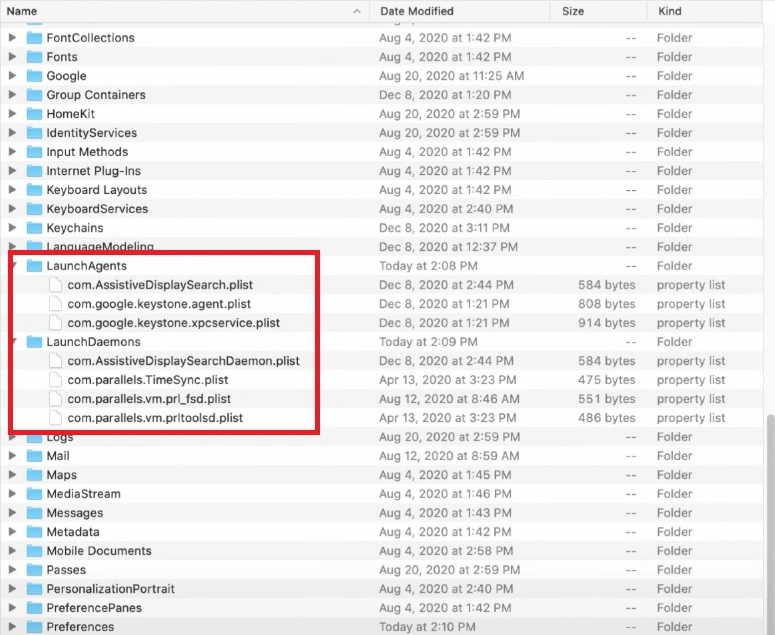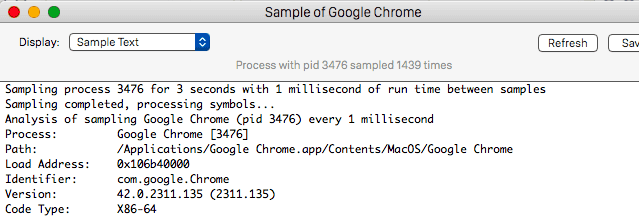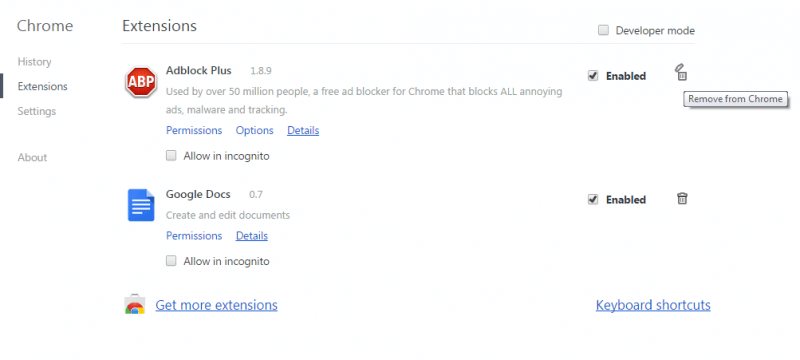Assistive Display Search
Assistive Display Search is a browser attachment that IT experts categorize as an unwanted browser hijacker that takes over the main browser. Assistive Display Search typically gets downloaded via spam messages and file bundles and once it is added to the browser, it begins to show obstructive ads and page redirects. The main purpose of this app is to make money for its developers by exposing users to paid adverts and site redirects. The more users who have this app on their Macs, the bigger the revenue earned from the advertising campaigns conducted by it. In order to maximize the number of computers this app gets installed on, its developers have made it compatible with all of the popular browsers that the majority of people use, including Firefox, Safari, Chrome, and others.

Typical symptoms that can be related to this type of app are unauthorized homepage and Omnibox search engine modifications like Search1.me, Search Alpha, obstructive page redirects during browsing sessions, as well as aggressive popups and banners that fill the browser when it is being used.
Assistive Display Search for Mac
Assistive Display Search for Mac is a new add-on for Safari that has been reported to take control of the browser’s settings and trigger aggressive ad generation. Assistive Display Search for Mac is also capable of making changes in the browser and automatically opening certain sites. Usually, users notice that a browser hijacker, such as this one, has gotten installed on their computers as soon as they open the affected browser. Some may even think that the computer has been attacked by a dangerous virus program such as a Trojan horse, Spyware, or Ransomware. For those of you who have this unwanted app on their Macs and are worried about the computer’s safety, know that it is unlikely that the hijacker would cause any damage to the system or to the data kept on the hard drives. Despite that, it is advisable to not let the hijacker remain in your system and instead install it as soon as possible.
What is Assistive Display Search?
Assistive Display Search is a rogue advertising app that some experts refer to as browser-infecting software. Assistive Display Search doesn’t have any damaging abilities but, in its attempts to advertise different sites and products, it may end up exposing your Mac to harmful malware. Unfortunately, many of the sites promoted by browser hijackers are not particularly safe, and some may even contain malware threats. However, since there’s usually not much control over what type of content is promoted by the majority of hijackers, it is perfectly possible to get redirected to a site filled with Trojan horses, Spyware, or Ransomware viruses.
The AssistiveDisplaySearch app
The AssistiveDisplaySearch app is an undesirable browser attachment that is installed in the browsers of Mac computers. The AssistiveDisplaySearch app shouldn’t be kept on the computer because its unpredictable ads and site redirects may eventually compromise the safety of the machine. We can offer you help with the removal of this undesirable application in the guide below. Just make sure you complete the instructions and the hijacker should be uninstalled and its browser changes removed in no time.
SUMMARY:
| Name | Assistive Display Search |
| Type | Browser Hijacker |
| Detection Tool |
Remove Assistive Display Search from Mac
For a quick way to remove Assistive Display Search try to do this inside your Mac browser:
- Open your Mac browser.
- Go to Preferences.
- Now navigate to the extensions sub-menu.
- Look for any unfamiliar entries, including Assistive Display Search.
- Remove Assistive Display Search from your Mac as well as any other suspicious-looking items by clicking on the trash bin icon.
If this does not help then continue reading this article for more detailed instructions on how to get rid of Assistive Display Search!

The first thing you need to do is to Quit Safari (if it is opened). If you have trouble closing it normally, you may need to Force Quit Safari:
You can choose the Apple menu and click on Force Quit.
Alternatively, you can simultaneously press ⌘ (the Command key situated next to the space bar), Option (the key right next to it) and Escape (the key located at the upper left corner of your keyboard).
If you have done it right a dialog box titled Force Quit Applications will open up.
In this new dialog window select Safari, then press the Force Quit button, then confirm with Force Quit again.
Close the dialog box/window.

WARNING! READ CAREFULLY BEFORE PROCEEDING!
Start Activity Monitor by opening up Finder, then proceed to ![]()
Once there, look at all the processes: if you believe any of them are hijacking your results, or are part of the problem, highlight the process with your mouse, then click the “i” button at the top. This will open up the following box:

Now click on Sample at the bottom:

Do this for all processes you believe are part of the threat, and run any suspicious files in our online virus scanner, then delete the malicious files:


The next step is to safely launch Safari again. Press and hold the Shift key while relaunching Safari. This will prevent Safari’s previously opened pages from loading again. Once Safari is opened up, you can release the Shift key.
On the off chance that you are still having trouble with scripts interrupting the closing of unwanted pages in Safari, you may need to take some additional measures.
First, Force Quit Safari again.
Now if you are using a Wi-Fi connection turn it off by selecting Wi-Fi off in you Mac’s Menu. If you are using a cable internet (Ethernet connection), disconnect the Ethernet cable.

Re-Launch Safari but don’t forget to press and hold the Shift button while doing it, so no previous pages can be opened up. Now, Click on Preferences in the Safari menu,

and then again on the Extensions tab,

Select and Uninstall any extensions that you don’t recognize by clicking on the Uninstall button. If you are not sure and don’t want to take any risks you can safely uninstall all extensions, none are required for normal system operation.
![]()
The threat has likely infected all of your browsers. The instructions below need to be applied for all browsers you are using.
Again select Preferences in the Safari Menu, but this time click on the Privacy tab,

Now click on Remove All Website Data, confirm with Remove Now. Keep in mind that after you do this all stored website data will be deleted. You will need to sign-in again for all websites that require any form of authentication.
Still in the Preferences menu, hit the General tab

Check if your Homepage is the one you have selected, if not change it to whatever you prefer.

Select the History menu this time, and click on Clear History. This way you will prevent accidentally opening a problematic web page again.
![]() How to Remove Assistive Display Search From Firefox in OSX:
How to Remove Assistive Display Search From Firefox in OSX:
Open Firefox, click on ![]() (top right) ——-> Add-ons. Hit Extensions next.
(top right) ——-> Add-ons. Hit Extensions next.

The problem should be lurking somewhere around here – Remove it. Then Refresh Your Firefox Settings.
![]() How to Remove Assistive Display Search From Chrome in OSX:
How to Remove Assistive Display Search From Chrome in OSX:
Start Chrome, click ![]() —–>More Tools —–> Extensions. There, find the malware and select
—–>More Tools —–> Extensions. There, find the malware and select ![]() .
.

Click ![]() again, and proceed to Settings —> Search, the fourth tab, select Manage Search Engines. Delete everything but the search engines you normally use. After that Reset Your Chrome Settings.
again, and proceed to Settings —> Search, the fourth tab, select Manage Search Engines. Delete everything but the search engines you normally use. After that Reset Your Chrome Settings.
If the guide doesn’t help, download the anti-virus program we recommended or try our free online virus scanner. Also, you can always ask us in the comments for help!

Leave a Comment